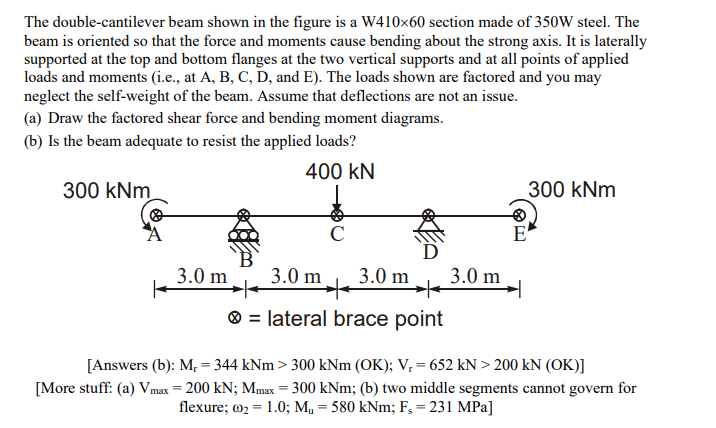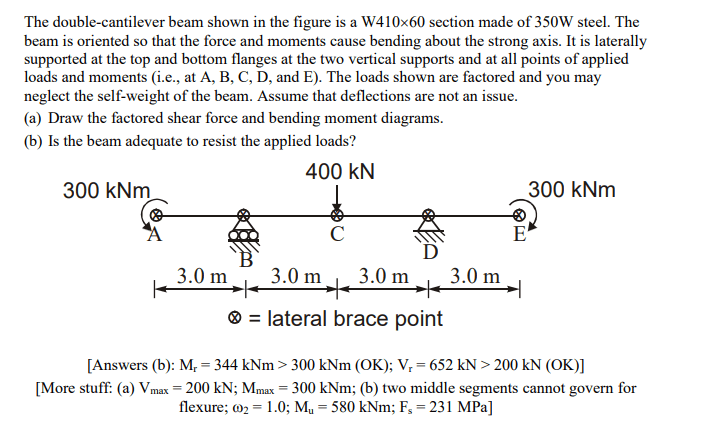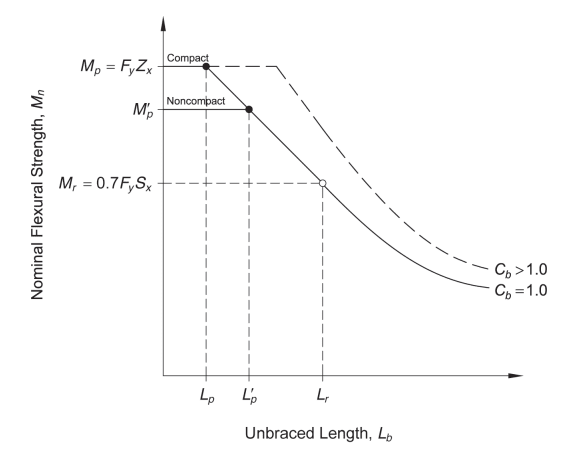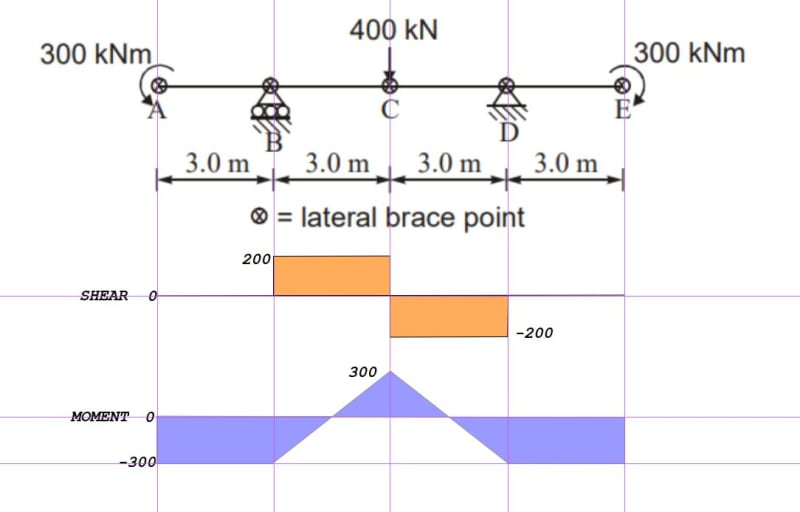Ilovestructures
Student
Hi all!
I'm taking my first course in steel design. I am struggling with understanding how to analyze flexural capacity for beams which we have to consider multiple segments or unbraced lengths. In general, do we just find the equivalent moment factor(Moment adjustment factor based on the moment diagram shape for that segment)and compute the capacity for each segment and then compare it with the MAXIMUM MOMENT IN THAT SEGMENT. If the computed resistance for that segment is greater than the MAX MOMENT IN THE SEGMENT, then that segment has adequate capacity, is this correct? or do we compute the resistance capacity for each segment and then take the lowest capacity as the one that governs for the entire beam. Please advise.


For example in this problem here, we have 4 unbraced segements to consider. Since it is symmetric we can only consider 2 segments. For Segment 1, Moment diagram is just a straight line and max moment is 300. factor is 1.0 . For the segment 2 max moment MAGNITUDE is also 300 but the moment factor is 2.39. we then get a higher capacity for segment 2. but for segment 1 our moment capacity is 234KNm and segmeent 2 is 347knm. Since the max moment IN SEGMENT 1 is 300 does that mean the beam does not adequatly resist the moment since its capacity for that segment is 234knm. Additionally how do we determine which segment governs the flexural capacity.
I'm taking my first course in steel design. I am struggling with understanding how to analyze flexural capacity for beams which we have to consider multiple segments or unbraced lengths. In general, do we just find the equivalent moment factor(Moment adjustment factor based on the moment diagram shape for that segment)and compute the capacity for each segment and then compare it with the MAXIMUM MOMENT IN THAT SEGMENT. If the computed resistance for that segment is greater than the MAX MOMENT IN THE SEGMENT, then that segment has adequate capacity, is this correct? or do we compute the resistance capacity for each segment and then take the lowest capacity as the one that governs for the entire beam. Please advise.


For example in this problem here, we have 4 unbraced segements to consider. Since it is symmetric we can only consider 2 segments. For Segment 1, Moment diagram is just a straight line and max moment is 300. factor is 1.0 . For the segment 2 max moment MAGNITUDE is also 300 but the moment factor is 2.39. we then get a higher capacity for segment 2. but for segment 1 our moment capacity is 234KNm and segmeent 2 is 347knm. Since the max moment IN SEGMENT 1 is 300 does that mean the beam does not adequatly resist the moment since its capacity for that segment is 234knm. Additionally how do we determine which segment governs the flexural capacity.



